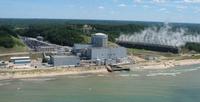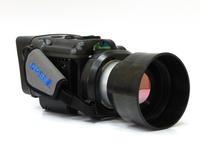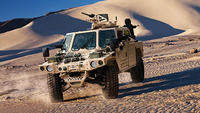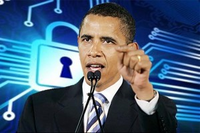-
Scenario-based gaming exercise to improve intelligence analysis
Raytheon has created a scenario-based gaming exercise to study in depth the intelligence analyst’s tradecraft; the company says the goal is ultimately to help analysts produce the best intelligence products and streamline workflows
-
-
NRC sees no evidence of bad security practices at Michigan nuclear plant

The Nuclear Regulatory Committee (NRC) released information last week about a leak earlier this summer at the Palisades plant near South Haven, Michigan; the plant has been mired in controversy this year, as at least three water leaks have occurred in the past several months, and the plant has one of the worst safety ratings in the United States
-
-
Environmentalists concerned about earthquakes tests near California nuclear plant
The Pacific Gas and Electric Company (PG&E) wants to use air guns to emit strong sound waves into a large near-shore area which includes parts of marine reserves; the purpose: creating three dimensional maps of fault zones near its Diablo Canyon nuclear plant in California; the plans have federal and state officials concerned about marine life and public safety
-
-
Dallas area earthquakes were caused by fracking: geophysicists
Three earthquakes that hit a Dallas suburb last week could be connected to fracking operations, according to a local geophysicist who studies earthquakes in the region; the earthquakes were considered minor, with the biggest one registered at a 3.4 on the Richter scale; no injuries were reported despite many emergency calls
-
-
Infrastructure security market to reach a value of $32.55 billion in 2012
The infrastructure security market has rapidly developed over the past decade, with the formation of a host of governmental and international organizations dedicated to homeland security and critical infrastructure protection; a new report says growth trends in the infrastructure protection market will continue
-
-
Camera for long-range gas leak detection

New infrared gas imaging camera equipped with a 75 mm lens; it iscertified for use in Class I Div 2 hazardous locations, enabling remote detection and visualization of gas leaks from a great distance
-
-
Oshkosh Defense unveils new light vehicle for unconventional missions

Using the occasion of the Modern Day Marine 2012 exposition, held 25-27 September in Quantico, Virginia, Oshkosh Defense unveiled its new Special Purpose All-Terrain Vehicle (S-ATV) designed for unconventional and reconnaissance missions, and also showed its Light Combat Tactical All-Terrain Vehicle (L-ATV), which was selected for the Joint Light Tactical Vehicle (JLTV) Engineering, Manufacturing and Development (EMD) phase; the joint services are expected to replace tens of thousands of HMMWVs with the JLTV
-
-
U.K. military’s drone spending keep rising
In an effort to boost its military, the United Kingdom, over the past five years, has spent more than two billion euros buying and developing unmanned drones; the U.K. has no intention of slowing down, as it is committed to spending another two billion euros on new unmanned aircraft
-
-
U.S. nuclear industry believes its on the threshold of a renaissance
Following the March 2011 Fukushima nuclear disaster, doubts were raised about the future of the U.S. nuclear power industry; now, eighteen months later, a new poll, and changes in NRC’s reactor design approval procedure, have convinced industry leaders that nuclear power could become a significant source of power in the United States
-
-
EU considers far-reaching Internet security initiative
Cybersecurity is becoming an increasingly more daunting challenge as governments try to prevent attacks against critical infrastructure on which the well-being of countries depends, now, several European countries are trying to come together in an effort to defend themselves against a cyber attack, but critics say the project, called CleanIT, goes too far
-
-
The administration set to issue a cybersecurity executive order

President Obama issued a proclamation the other day making October National Cyber Security Awareness month. The administration’s efforts to push a cybersecurity bill through Congress, however, have so far failed, so the administration is opting for a solution other administrations have adopted in the face of a recalcitrant Congress: executive order
-
-
Employers in a bind over the administration’s deferred deportation executive order
The administration’s 15 June executive order defers deportation action against 1.2 million illegal immigrants who meet certain criteria; those who apply for the 2-year deferment should prove, for example, that they have lived in the United States for at least five years, and one way to do so would be a job verification from their employers; employers, however, are concerned that those employers who agree to these requests may be acknowledging that they knowingly hired an illegal immigrant, a violation of federal law
-
-
Assessment reports mineralization of 2.173 million tons rare Earths elements in Idaho, Montana
U.S. Rare Earths, Inc. announced the other day the final results of an independent analysis of historic exploration work done on its Idaho and Montana properties
-
-
Innovative, “complete” solution for oil-spill cleanup
Corncobs, straw, and other absorbents used to clean up oil spills can hold only about five times their own weight and pick up water, as well as oil; scientists describe what may be a “complete solution” to cleaning up oil spills — a superabsorbent material that sops up forty times its own weight in oil and then can be shipped to an oil refinery and processed to recover the oil
-
-
Immigrant entrepreneurship in U.S. has stalled for the first time in decades
New study finds that high-tech, immigrant-founded startups – a critical source of fuel for the U.S. economy — has stagnated and is on the verge of decline; the proportion of immigrant-founded companies nationwide has slipped from 25.3 percent to 24.3 percent since 2005; the drop is even more pronounced in Silicon Valley, where the percentage of immigrant-founded startups declined from 52.4 percent to 43.9 percent
-
More headlines
The long view
Factories First: Winning the Drone War Before It Starts
Wars are won by factories before they are won on the battlefield,Martin C. Feldmann writes, noting that the United States lacks the manufacturing depth for the coming drone age. Rectifying this situation “will take far more than procurement tweaks,” Feldmann writes. “It demands a national-level, wartime-scale industrial mobilization.”
Trump Is Fast-Tracking New Coal Mines — Even When They Don’t Make Economic Sense
In Appalachian Tennessee, mines shut down and couldn’t pay their debts. Now a new one is opening under the guise of an “energy emergency.”
Smaller Nuclear Reactors Spark Renewed Interest in a Once-Shunned Energy Source
In the past two years, half the states have taken action to promote nuclear power, from creating nuclear task forces to integrating nuclear into long-term energy plans.
